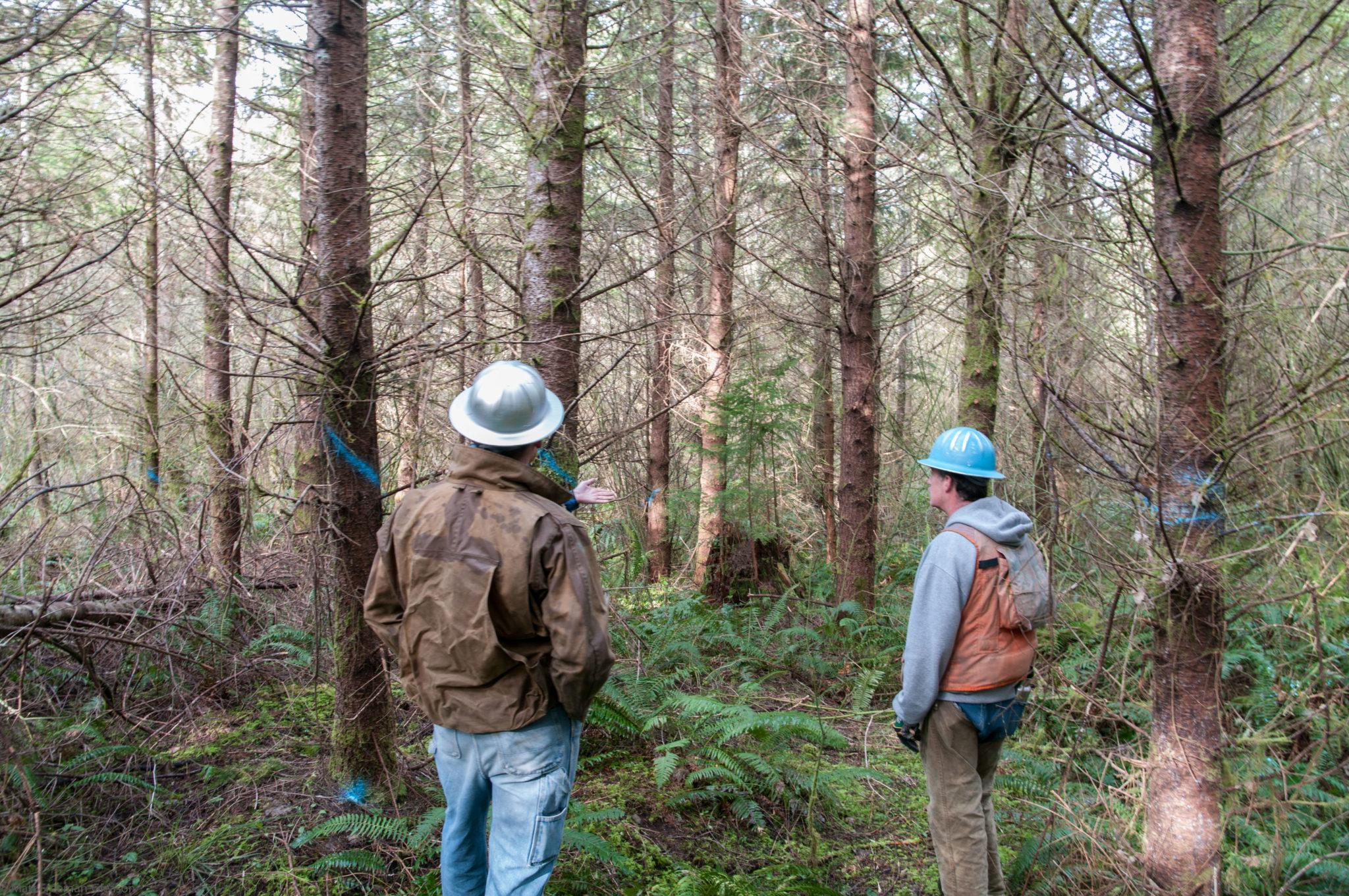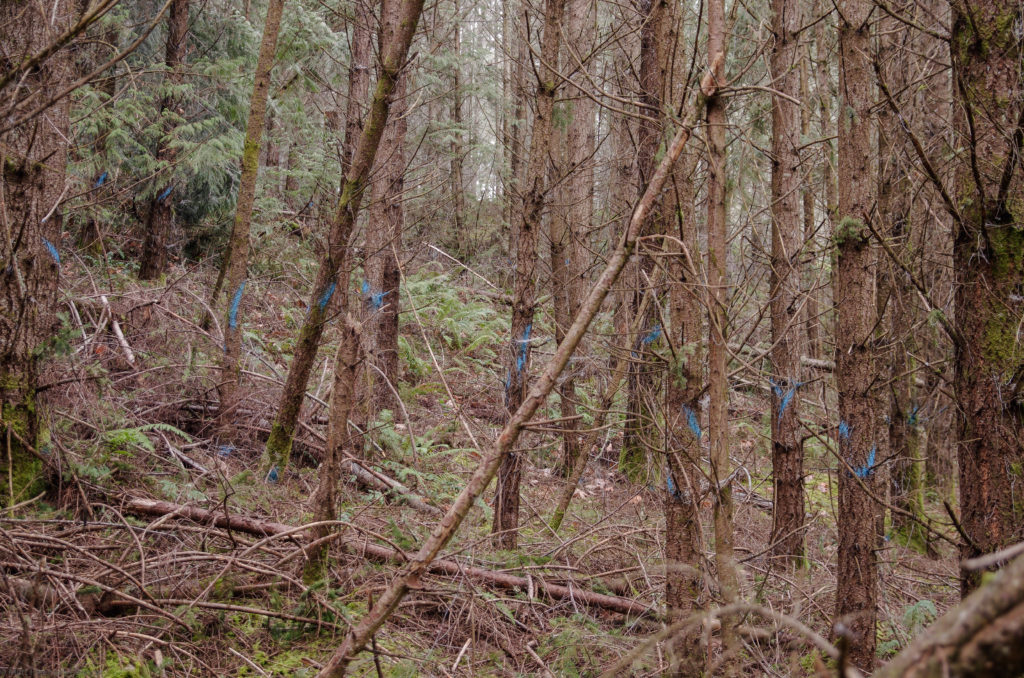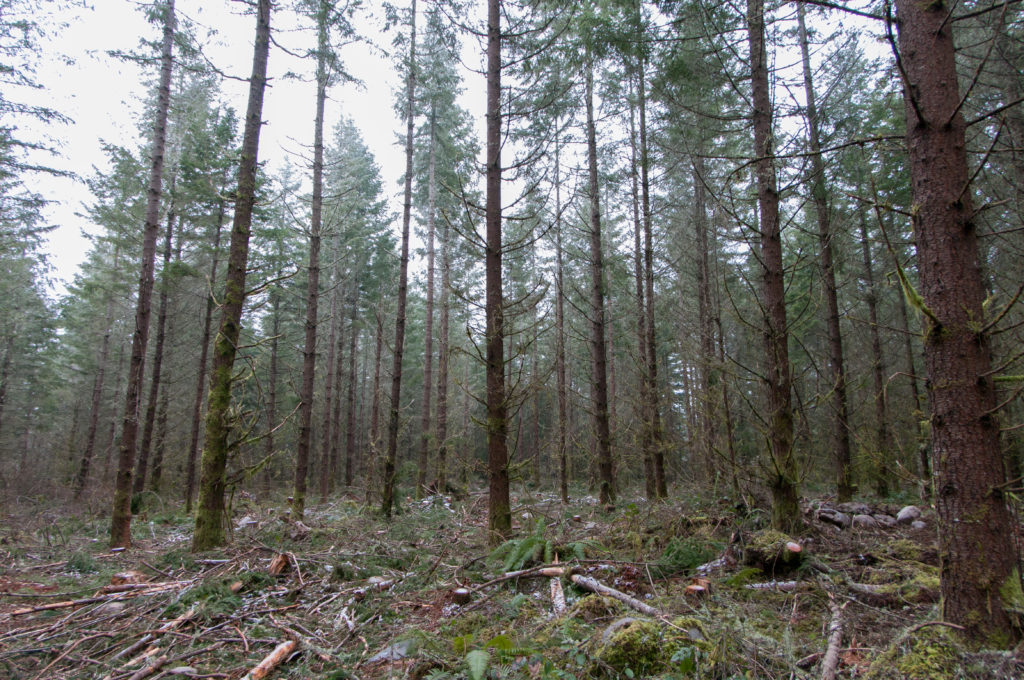The Rhyme & Reason Behind Pre-Commercial Thinning (aka PCT)

Forest ecosystems have a natural carrying capacity and can sustain only a finite number of trees and vegetation. As seedlings grow bigger, they begin to compete with one another for the resources they need to survive, resulting in some trees dying-off.
Over time, forests thin themselves naturally. In the forests of the Pacific Northwest, this development phase, known as competitive exclusion, can last 50-100 years. That can be a long time to wait if you want to grow trees for harvest in your lifetime or create some aspect of complex habitat structure.
In planted stands that have been artificially overstocked, there’s often a need to do some thinning; sometimes it’s even the intention of the landowner to harvest some of the trees at a young age. They had intentionally overplanted as they weren’t sure how many trees were going to make it through the challenging seedling years of drought, freezes, browsing, and other ailments―and it was easier to plant once and plan-to-thin than restock the forest multiple times. (Thinking along the lines of the Chinese proverb, ‘The best time to plant a tree was 20 years ago. The second best time is now.’)

Young-stand thinning (aka pre-commercial thinning or PCT) is a silvicultural practice that entails removing the individual trees that are declining in a forest―often they are smaller and have less robust crowns―and are less than 20 years old.
Thinning helps the remaining trees better access the water, soil nutrients, and light they need to grow vigorously and resist insects and diseases. It also helps release the space and light needed to activate understory vegetation growth and thereby improve habitat and food available for wildlife―increasing overall biodiversity. Thinning can also be a tool to reduce wildfire risk in the “dry-side” ecosystems common in central and eastern Oregon and Washington.

While young-stand thinning is sometimes done at a cost, the resulting long-term forest health benefits can improve the returns for commercial harvests in the future. “To delay the thinning and wait for the trees to grow enough to make the thinning harvest profitable is appealing, but deceptive. It may avoid the short-term expense, but is likely to weaken the stand at a long-term cost of growth, stand stability and future options,” says OSU Forestry & Natural Resource Extension Agent Brad Withrow-Robinson in the Tree Topics blog.
Interested in learning more about pre-commercial and young-stand thinning? More resources are available on our website here.

Leave a Reply